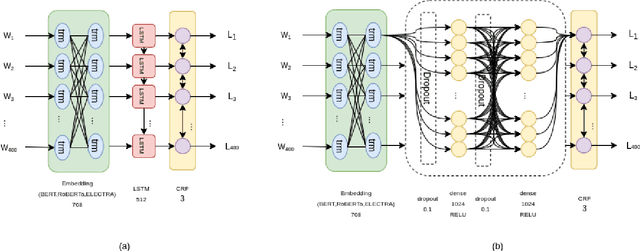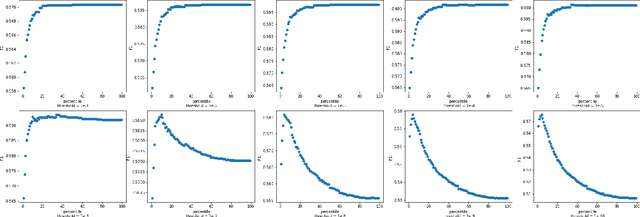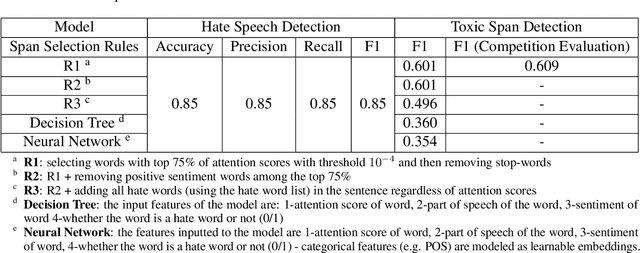UTNLP at SemEval-2021 Task 5: A Comparative Analysis of Toxic Span Detection using Attention-based, Named Entity Recognition, and Ensemble Models
Paper and Code
Apr 10, 2021



Detecting which parts of a sentence contribute to that sentence's toxicity -- rather than providing a sentence-level verdict of hatefulness -- would increase the interpretability of models and allow human moderators to better understand the outputs of the system. This paper presents our team's, UTNLP, methodology and results in the SemEval-2021 shared task 5 on toxic spans detection. We test multiple models and contextual embeddings and report the best setting out of all. The experiments start with keyword-based models and are followed by attention-based, named entity-based, transformers-based, and ensemble models. Our best approach, an ensemble model, achieves an F1 of 0.684 in the competition's evaluation phase.
 Add to Chrome
Add to Chrome Add to Firefox
Add to Firefox Add to Edge
Add to Edge